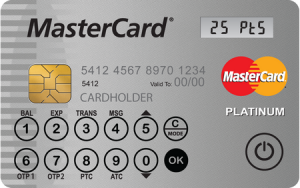Thin File credit
A limited credit history. Having a thin file can make it difficult to obtain credit or approve a loan, but some lenders will consider other payment information not included in the credit reports. A consumer who has had few or no loans or credit cards will have a thin file.
OPENING 'Fine File'
If you have a thin file and want to borrow money, you have several options.
The simplest option, since it depends on the measures you have already taken, is to ask the lender to consider the refund histories that are generally not reported to the credit bureaus, such as utility payments and rental payments. If you are applying for a mortgage, for example, Fannie Mae says that lenders can build a nontraditional credit history for a consumer with a combination of their bank statements, canceled checks, paid invoices and letters of reference from creditors and owners.
Another option that requires more time and effort is to get a secured credit card and start building a credit history. A secured credit card requires you to deposit an amount of money that will serve as your line of credit, so it effectively functions as a debit card. However, since it is technically a credit card, your payment history will be reported to the credit bureaus and will help you establish a credit score after several months. Be sure to get a secured credit card that reports your payment history to the three major credit bureaus and make sure you pay your bills in full and on time. You do not want to create a mediocre or poor credit history. build a strong one Also, look for a secured card with a low or no annual fee.
Read more
A limited credit history. Having a thin file can make it difficult to obtain credit or approve a loan, but some lenders will consider other payment information not included in the credit reports. A consumer who has had few or no loans or credit cards will have a thin file.
OPENING 'Fine File'
If you have a thin file and want to borrow money, you have several options.
The simplest option, since it depends on the measures you have already taken, is to ask the lender to consider the refund histories that are generally not reported to the credit bureaus, such as utility payments and rental payments. If you are applying for a mortgage, for example, Fannie Mae says that lenders can build a nontraditional credit history for a consumer with a combination of their bank statements, canceled checks, paid invoices and letters of reference from creditors and owners.
Another option that requires more time and effort is to get a secured credit card and start building a credit history. A secured credit card requires you to deposit an amount of money that will serve as your line of credit, so it effectively functions as a debit card. However, since it is technically a credit card, your payment history will be reported to the credit bureaus and will help you establish a credit score after several months. Be sure to get a secured credit card that reports your payment history to the three major credit bureaus and make sure you pay your bills in full and on time. You do not want to create a mediocre or poor credit history. build a strong one Also, look for a secured card with a low or no annual fee.



























